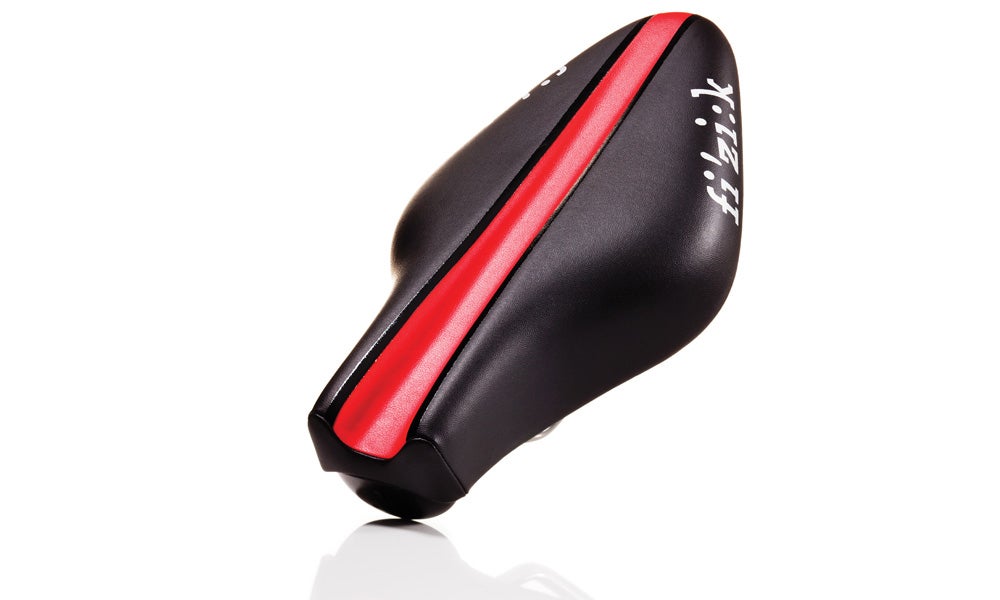Eurobike: Triathlon-Specific Saddles Become The Norm

Photo: John David Becker
This article was originally published in the Nov./Dec. 2013 issue of Inside Triathlon magazine.
The cycling discipline of road time trialing has been both a benefactor for and a hindrance to the evolution of triathlon gear, and the limitations of “TT” gear are continuing to erode. Triathlon equipment — frames, wheels, bars and components, to name a few — have all improved in quality because road-focused companies invest in developing gear used in the time-trial stages that often swing the world’s biggest bike races. This has been a good thing for triathletes. The downside, however, is that many have historically been saddled with equipment supposedly suited to triathlon that is really just time-trial gear — and there is a difference.
Slowly, manufacturers have started to develop equipment that is genuinely made for triathletes. Aero frames are now built with geometry that is appropriate for the majority of triathletes; many race wheels are both fast and easy to control; high-capacity hydration systems that don’t add wind resistance are becoming commonplace; aerobars are more adjustable than ever.
But the saddle has been one of the last pieces of gear to be designed for triathletes instead of time trialists. The shift is long overdue, but many saddle makers are now making true triathlon saddles.
ISM rewrote the definition of a triathlon saddle with the Adamo line. The Adamo’s split-prong shape drew ridicule at first but quickly became the go-to solution of many tri fitters for saddle discomfort — 119 riders raced an ISM saddle at Ironman Hawaii in 2009, and that number grew to 403 in 2012, vaulting over all saddle makers except one.
Eurobike 2013 marked a distinct tipping point in triathlon saddle design. The large, more traditional saddle companies that have resisted the shift to ISM-style two-tong saddles have finally made the leap. And Specialized, while far from stodgy when it comes to product innovation, threw its formidable weight into this trend in 2013 as well. Most triathlon bikes still come equipped with a time-trial saddle, but even that is starting to change.
RELATED: Are You Riding The Wrong Saddle?
What’s the Difference?
A long, flat or rounded nose sticking off the front of the saddle is the hallmark of a traditional time-trial saddle. These seats put pressure on the soft tissue down the middle of the rider’s underside. Triathlon saddles support the rider’s weight directly through the sit bones under the hips rather than the soft tissue. Many triathletes achieve this type of bone-on-saddle support from a saddle with a deep split down the middle that stretches all the way to the nose.
Pro Aerofuel
Pro-bikegear.com
Suited to riders with narrow hips, the Pro Aerofuel has a narrower nose than most triathlon saddles. The two foam rails are very firm to support the rider without mushing out of form.
Selle Italia Iron
Selleitalia.com
Two different width options are available at three different weights, and the rear of the saddle has a concaved shape. The extended nose is narrower than some tri saddles.
RELATED: 2013 Buyer’s Guide, Saddles
Fizik Tritone
Fizik.com
Softer foam and a broader nose differentiate the Tritone’s shape from the Selle Italia and Pro saddles, and it has an integrated two-bottle storage system to mount storage behind the saddle.
Specialized Sitero
Specialized.com
Semi-firm padding effectively holds the saddle’s shape, and the channel between the supportive tongs is slightly shallower than some of the others. It also boasts a single rear bottle mount tucked tightly beneath the saddle.
“Like” us on Facebook to get the first look at our photo shoots, take part in lively debates and connect with your fellow triathletes.